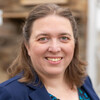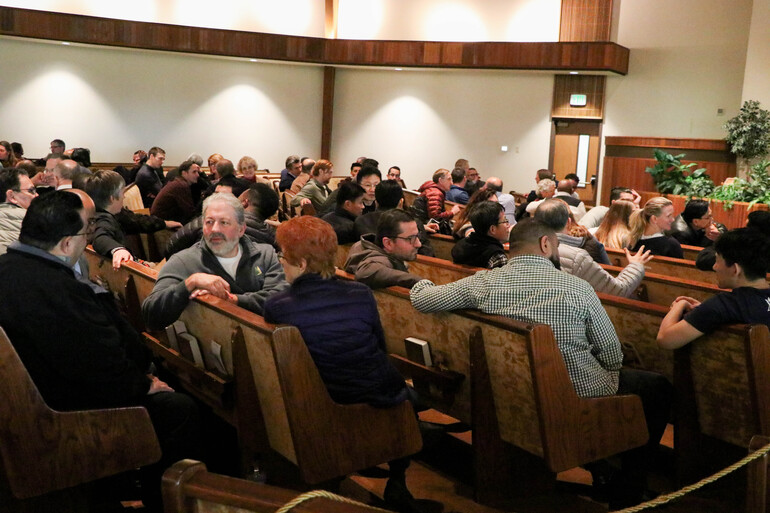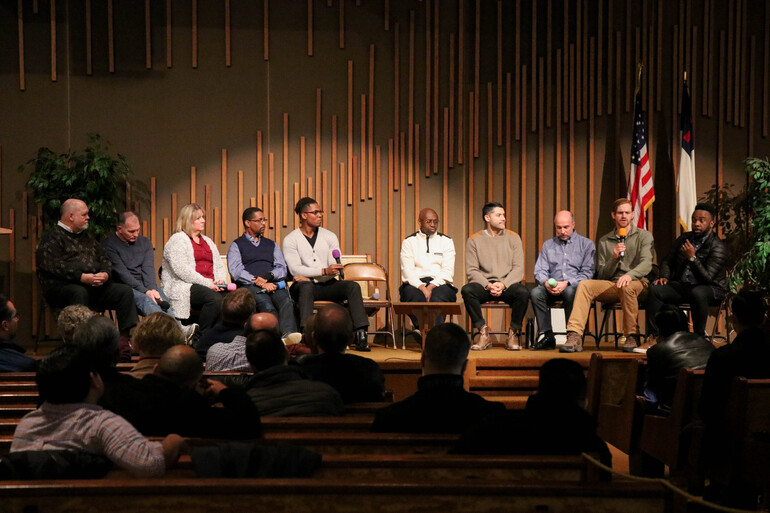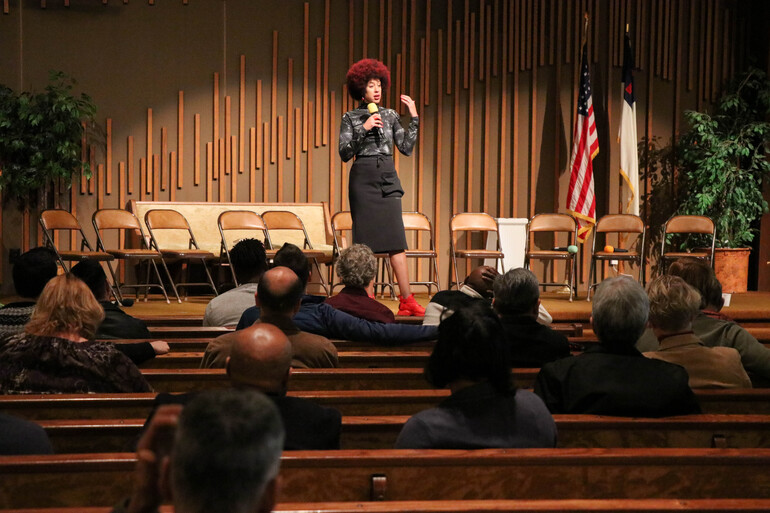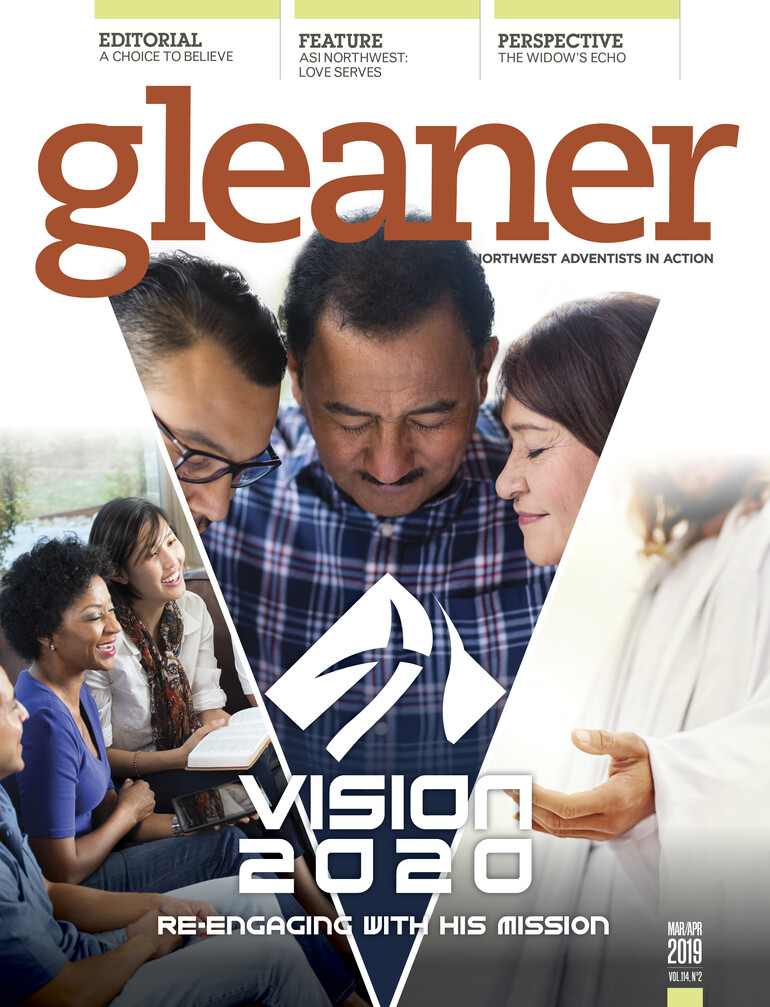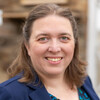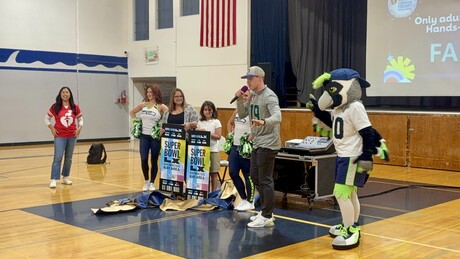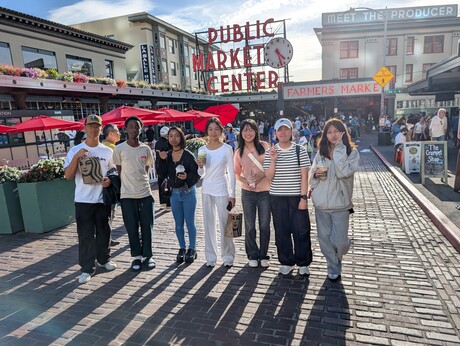How do you facilitate a crucial conversation? You start small with one-on-one conversations, expand to a larger core group and then include a larger audience.
This model was demonstrated during Washington Conference Pastors’ Meeting on Jan. 7, 2019, when pastoral staff engaged in a conversation about race and unity.
“This is a difficult subject because racism is a spiritual stronghold and the biggest impediment to love,” acknowledges Bill Roberts, Washington Conference ministerial director.
Long before the gathering in January, Roberts began engaging in one-on-one conversations with pastors, leaders and church members with various ages, backgrounds and experience. “I heard and saw a lot of pain when talking with people,” Roberts says.
In praying about how best to respond, Roberts felt impressed by God to bring together a core group to test the crucial conversation concept at a micro level with a panel of 10 pastors. The core group, for this first round of dialogue, included African-American, Caucasian and Caribbean pastors. Future core groups will include Korean, Pacific Islander and Hispanic representatives.
“A high level of spiritual maturity is needed because this conversation only works if we are real with each other,” Roberts says. “We want to grow and glorify God better.”
Coming Together
The core group of panelists helped shape the larger conversation with the whole pastoral team. The team day was specifically structured to begin with worship, prayer and a devotional message from Magnifique Niyonizeye, who shared her experience with racism that began in sixth grade.
“Regardless of my skin color, I still have a voice,” she explained about what she had learned. Now a student at Auburn Adventist Academy, she saw a need for cultural chapels and educating her classmates about the beautiful diversity represented on campus.
“In our society, we are so used to division that we crave and need a place for unity,” Niyonizeye told the group. “Teens know how to spot fake friends and fake churches. People will know we are Christian when we join together in unity … just like it says in Psalm 133.”
The pastoral panel then shared reflections in a one-hour presentation that turned into a three-hour conversation as additional colleagues spoke up and shared their stories, perspectives and life experiences.
“I thought it was a mistake when I was invited to participate in this panel,” admitted Ryan Rogers, who pastors the Poulsbo district. “I thought I didn’t have a voice, yet I learned that my privileges don’t excuse me from this conversation. Quietness is not a solution.”
“Sometimes you need someone else to be a voice for you,” shared Wilma Bing, a panelist and an associate pastor for Auburn Adventist Academy Church. “It’s important to listen well and be a voice for others.”
“This group gave me hope,” said Hanz Jouissance, a panelist and an associate pastor at Green Lake Church of Seventh-day Adventists.
Jouissance once told his mentor Dwight Nelson, “I don’t think racism will end before Jesus comes.”
In that dialogue Nelson countered, “You may be right, but we could help if the church repents for past mistakes. How can we move forward if the past is still there?” Nelson had been scheduled to speak at these meetings, but an injury prevented him from coming.
During the panel discussion, Ron Sydney, 24-Seven and Eastside Fellowship District pastor, acknowledged, “Today won’t solve race relations. It takes time. We need to take action because people are saying ‘speak for me, listen to me.’ This is a systemic issue, and we need to stand together.”
Taking Action
Washington pastors then dialogued about practical steps local churches could take to engage in future conversations.
“Bill gave us a good example,” Michael Demma, a panelist who is an associate pastor for Puyallup Adventist Church, shared with the group. “Start with a small group. Talk about sensitivities. Hear from other cultures. Read books. Educate yourself. I hope this conversation is the beginning of something significant in our conference.”
From the audience, pastors brainstormed about creating space for positive interactions, paying attention to language nuances, studying multicultural communication literature, engaging in a variety of conversations, using children’s stories to share unity themes with all ages, getting involved in community causes and identifying blind spots in life.
In an afternoon session, racial equity trainer Erin Jones led an interactive discussion about crossing the boundaries that separate people.
“The greatest danger is that we sit next to each other [for this conversation] but don’t take any additional actions,” Jones says. “It’s fakey fake unity. If we can’t talk about race here in the church, where can we talk about it? We need to establish common language so we can talk with each other. We know about people, but we don’t know them until we talk face to face.”
Jones went on to suggest starting bridge-building conversations from a point of commonality. She highlighted Gal. 3:26–29 (we are all heirs in Christ) and Eph. 4:1–6 (be patient with one another).
Jones defined race as something you don’t get to choose; it’s what others see. Ethnicity, she shared, is how you define yourself (or not) based on your nation of origin, language or traditions. In the third definition, Jones shared how we all have culture and this culture can be created. She called the audience to be “color brave” vs. “color blind” as God made us to be different and beautiful in His eyes.
“This conversation is a real gift,” said César de León, a guest attendee from the North Pacific Union Conference. “You don’t hear this conversation everywhere. I am a better person because of today.”
Earlier in the meeting, Roberts acknowledged and advised, “We live in a world that has a problem that needs to be addressed. Put on empathy. Have an open mind. Ask God to help you love others better.”




